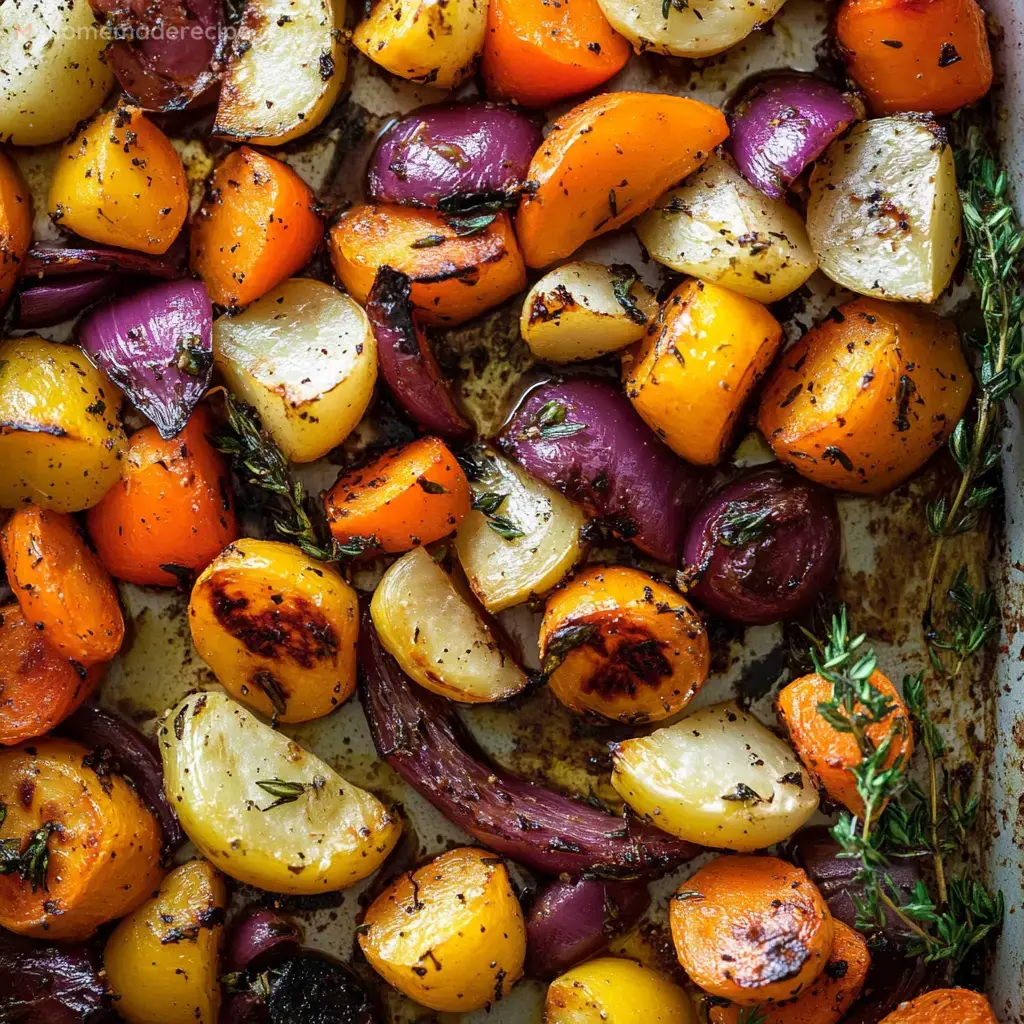Cooking veggies in the oven can turn an everyday side dish into something truly special. Once you get the hang of it, you'll wonder how you ever ate them any other way. The technique brings out amazing flavors and adds a richness that's tough to get with other cooking methods. As both a mom and someone who loves to cook, I've found that knowing how to properly roast veggies is absolutely essential, especially when you're trying to get your family to eat more healthy foods that actually taste good.
There's more to roasting veggies than just throwing them in the oven and hoping for the best. You need to understand a few basics to make sure they turn out great every time. What makes roasted veggies so wonderful? They get sweeter naturally, they develop a nice crunch outside while staying soft inside, and you can use all kinds of different seasonings to change things up. Whether you're just starting out or you've been cooking forever, getting good at roasting veggies will give you tons of new meal options.
Grouping Your Veggies
When roasting veggies, one of the most crucial things to remember is keeping different types apart based on how much water they hold and how hard they are. You should cook dense, starchy items like carrots, regular potatoes, and sweet potatoes separately from watery ones such as eggplant, zucchini, and peppers. This way, everything cooks properly and you won't end up with some pieces soggy and others undercooked.
Take carrots and zucchini as an example - if you put them together, the zucchini lets out so much water that your carrots will steam instead of roast. That means no crispy outside or nice texture. But if you cook them separately, your carrots will get that perfect crisp-tender balance, and your zucchini will keep its sweetness with a bit of tasty browning on the edges.
Sizing Your Pieces
How you slice your veggies plays a big part in how well they roast. Try to cut everything roughly the same size so they finish cooking at the same time. While you might think smaller pieces would be better since they cook faster, bigger chunks actually work better for roasting. Tiny pieces cook through too quickly and don't have enough time to get that yummy brown outside that makes roasted veggies so good.
Keep in mind that veggies shrink by about a quarter while roasting, so cutting them bigger helps them maintain their shape. For instance, go with 1-inch carrot chunks or broccoli florets around 1 1/2 to 2 inches across. This keeps them from turning into tiny shriveled bits by the time they're done.
Handling Onions
Onions need special treatment when you're roasting. They cook faster than most other veggies, so you'll want to deal with them on their own. Mix your red onions with some olive oil, salt and pepper in their own bowl. Put them aside until about half an hour into the cooking time, then add them to your roasting pan. This timing trick makes sure they don't burn or get too dark before everything else is ready.
Preparing Everything Else
For all your other veggies, grab a big bowl. Toss in some whole garlic cloves that you've lightly crushed - don't mince them or they'll burn and taste bitter. Add some fresh thyme and tear up some sage leaves by hand for extra flavor. Pour in enough olive oil to coat everything, then sprinkle with salt and pepper. Mix it all together until every piece has a light coating of oil. This step really matters because it spreads the flavors around and stops the veggies from drying out while cooking.
Best Cooking Heat
People often argue about the perfect temperature for roasting, but generally a medium heat of 200°C/390°F (or 180°C/350°F if you're using a fan oven) works great. This cooler approach lets the veggies slowly caramelize and sweeten throughout. Going too hot - like 450°F - can burn the outsides while leaving harder veggies like potatoes and carrots raw in the middle.
Cooking Duration
First, get your oven warming to the right temperature. Cover a big roasting pan with parchment paper if you want, though it's not really needed since the oil on the veggies will keep them from sticking.
Lay out all your prepared veggies in one layer on the pan, making sure they don't pile up on each other. This lets air flow around each piece so they brown evenly and get crispy. Cook them for 30 minutes, then add the red onions you set aside earlier. Give everything a stir to mix it up and make sure it's all cooking evenly.
Keep roasting for another hour, stirring once halfway through. Yes, the total cooking time of 90 minutes seems long, but trust me - it's worth it for getting that perfect color, texture, and taste. The extended time in the oven allows the natural sugars in the veggies to develop and creates that wonderful outer crust we all love.
After Cooking
Nobody loves washing dishes, but here's some good news - if you used parchment paper, cleanup will be super quick. Even without it, the oil coating means the veggies won't stick much, so wiping down the pan shouldn't be too hard.
Ways to Enjoy
When your veggies come out of the oven looking gorgeous, you can eat them just as they are or dress them up a bit. A little drizzle of fresh olive oil or some extra black pepper can really bring out their flavors. The long roasting time makes them naturally tastier because they've had plenty of time to develop deep, sweet flavors.
You can also try adding extra seasonings toward the end of cooking. Sprinkling some cheese on top and putting the pan back in the oven for a few minutes creates a melty topping that adds another dimension of flavor to your dish.
Different Takes
- Fresh Flavors: Try different herbs like rosemary, thyme, and sage, or spices such as garlic powder, chili powder, or cumin. You can mix these right into the veggies or stir them into your olive oil first.
- Fruity Notes: Put thin lemon or orange slices in the pan while cooking for bright flavor. You can also squeeze fresh citrus juice over everything just before serving.
- Dairy Additions: Like we mentioned before, scattering some grated cheese on top creates a delicious finish to your veggies.
- Protein Boost: For something more filling, roast your veggies alongside bits of bacon, pancetta, or chorizo. The fat that comes out of these meats adds amazing flavor to everything else in the pan.
Quick Tips Recap
- Group Smart: Cook dense root veggies apart from watery ones for best results.
- Size Matters: Cut everything in similar sizes for even cooking throughout.
- Oil Up: Mix veggies with olive oil, salt, pepper and herbs before they go in the oven.
- Medium Heat: Cook at 200°C/390°F for best results.
- Take Time: Let them roast for a full 90 minutes, stirring once halfway.
- Easy Cleanup: Use parchment paper to make washing up simpler.
Try New Combinations
The best part about roasted veggies is that you can switch things up to keep meals interesting. Don't be scared to mix different veggies together or try new seasonings. Play around with herbs, spices, and even different oils like avocado oil which works well at higher temperatures.
 Pin
Pin
